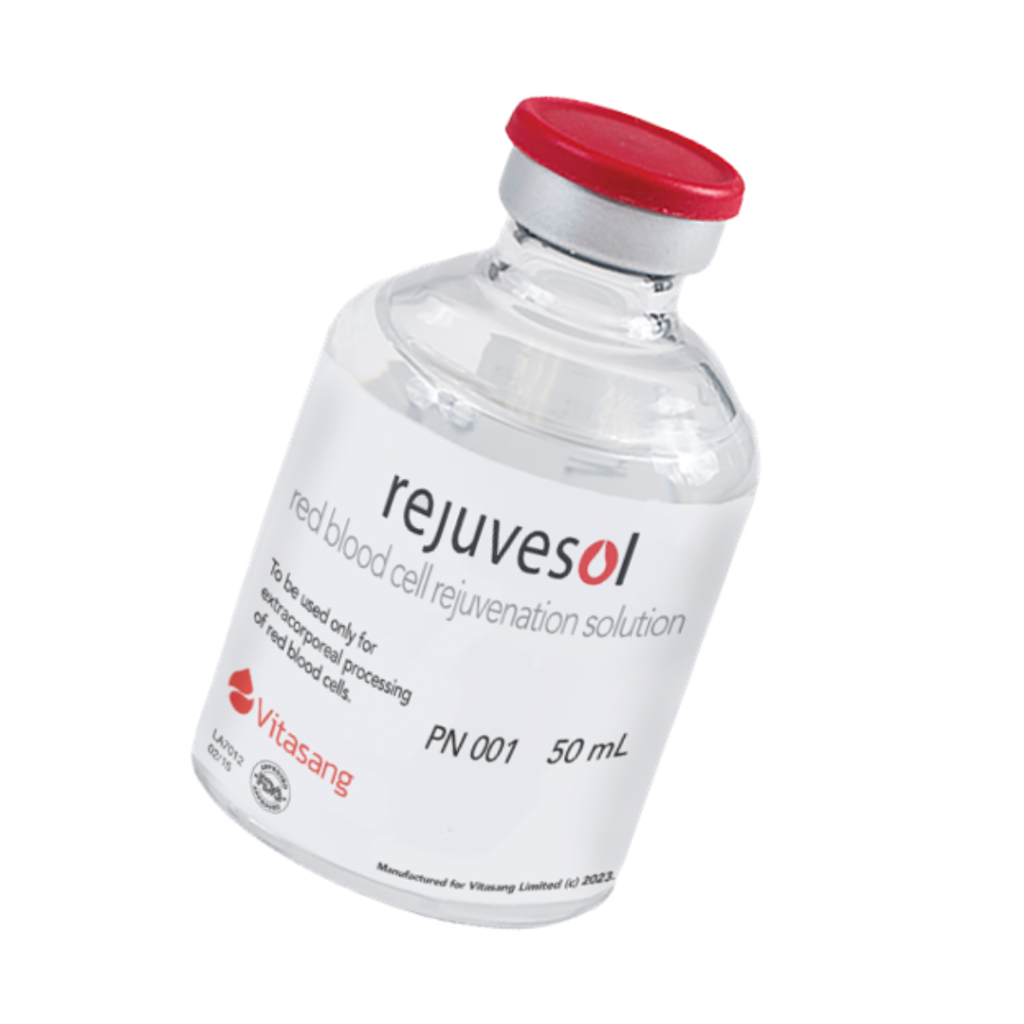Rejuvesol™ reverses the blood storage lesion.
The blood storage lesion1 refers to the collection of changes that occur to red blood cells (RBCs) during storage for later transfusion. These changes can negatively impact RBC viability, function, and the body’s ability to effectively utilize the transfused RBCs. To understand more about the storage lesion see our article on the subject here.

The impact of the storage lesion is well documented.
Rejuvesol will help address the key challenges of the storage lesion.
The key effects of the storage lesion include reduced RBC viability and survival time after transfusion; impaired ability to deliver oxygen to tissues due to changes like decreased deformability and reduced nitric oxide levels; accumulation of waste products like free hemoglobin and bioactive lipids that can trigger inflammation and depletion of key molecules like 2,3-DPG that facilitate oxygen release.
The storage lesion can lead to adverse clinical effects such as increased risk of organ failure, infection, and mortality in transfusion recipients, especially the critically ill. Transfusion of stored RBCs manifests immediate deficits in patient 2,3-DPG concentration after surgery with incomplete in vivo restoration 72 hours post-surgery2. To learn more about challenges in clinical practice see our article here.

Rejuvesol restores the ability of red blood cells to deliver oxygen and traverse through capillaries. This is accomplished by Rejuvesol increased levels of 2-3 DPG and ATP to normalise red blood cell morphology as found in fresh blood or higher in the stored cells.
